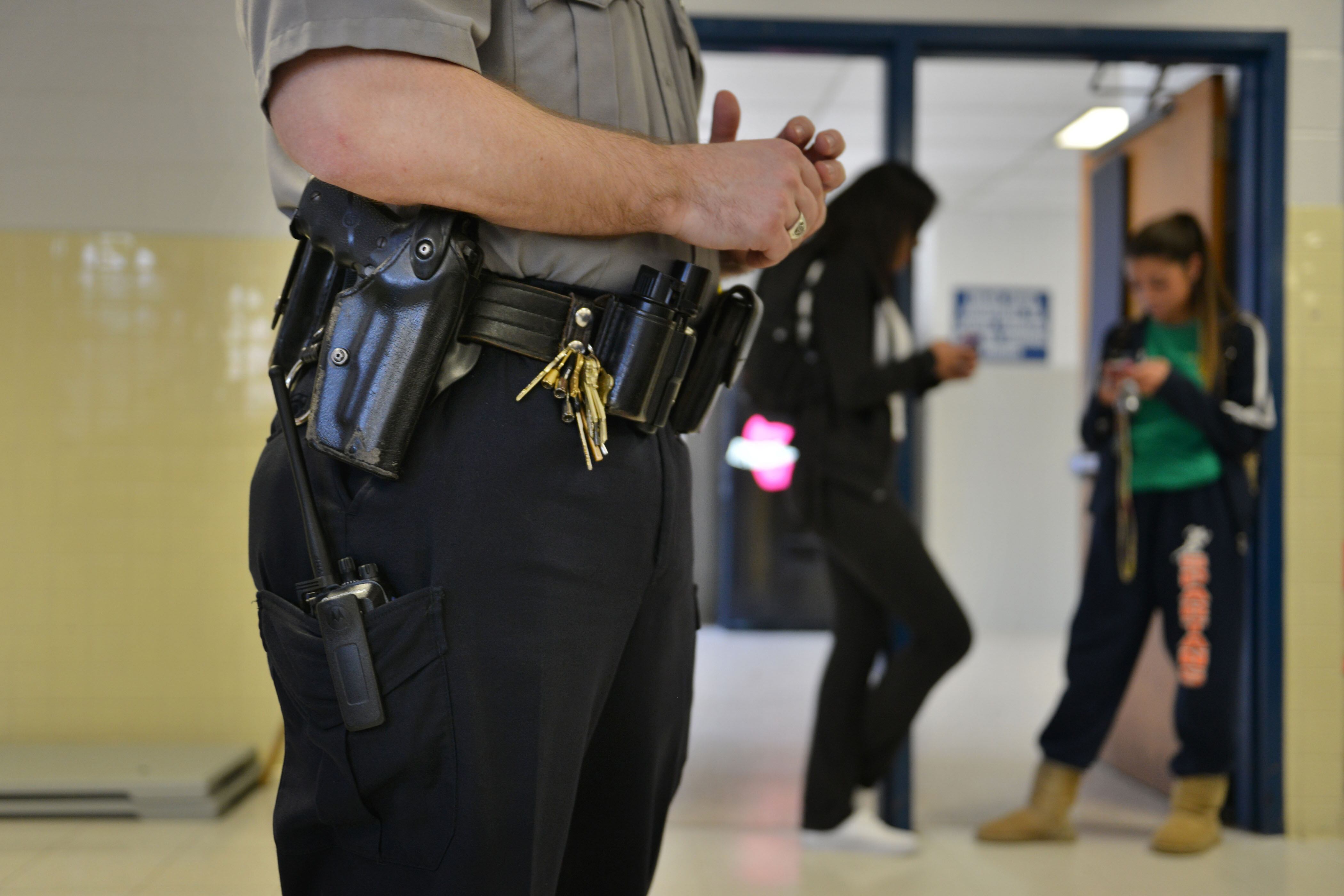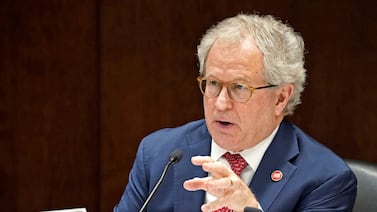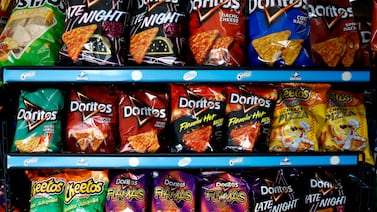Sign up for Chalkbeat New York’s free daily newsletter to keep up with NYC’s public schools.
A new musical in Brooklyn will spotlight the stories of students navigating policing in New York City public schools.
Written and directed by Jess McLeod, an artist-in-residence at the New York Civil Liberties Union, “SAFE” will have two June 1 performances at the Brooklyn Academy of Music. The roughly 50-minute show is based on interviews with students from across the five boroughs, and will follow students across a single school day. “SAFE” aims to demonstrate the potential harms of excessive policing in the city’s schools.
Debates over New York City school safety can be divisive. Some students argue police are ill-equipped to defuse tension and conflicts in schools, as tensions between students and officers can often be fraught. Advocates have also long pointed to data showing Black and Latino students can be disproportionately subjected to police interventions in the city’s schools.
But proponents of school safety agents and other measures, like metal detectors, have argued they are essential for maintaining order. In the past, students, parents, and educators have generally reported on annual school surveys that the agents help keep schools safe and respectful, though children at predominantly Black schools were less likely to agree.
Some students and advocates have also criticized the use of metal detectors in schools — arguing the technology can be invasive and detrimental to students. It’s an issue that the musical will tackle, giving audience members insight into student perspectives on how these machines impact their time at school. About 100,000 students in the city encounter metal detectors at school each day — a majority of which are students of color — according to the NYCLU.
The “SAFE” cast and production team feature an array of theater veterans, including McLeod, who previously worked on “Hamilton” and other stage productions.
Tickets to the event are available for free, but those who wish to attend one of the two Saturday performances must RSVP online. Seats will be distributed on a first-come, first-serve basis, and those who wish to attend should plan to arrive 45 to 60 minutes prior to the 3 p.m and 7 p.m. start times, according to organizers.
Although only two performances are currently scheduled, McLeod is hopeful there may be future interest in additional productions — potentially even in schools.
Chalkbeat spoke with McLeod, as well as NYCLU Center for Education Policy Director Johanna Miller, about the upcoming musical.
This interview has been edited for clarity and length.
Talk to me broadly about “SAFE.” Why were you interested in telling this story? How does the format of a musical lend itself to this issue?
Miller: Our goal is to bring the student experience to life for adults — parents, teachers, and especially policymakers — who very often see metal detectors as either a small inconvenience or a necessary evil. But what students tell us is that the metal detector experience is neither minor nor necessary. It’s not a thing that makes them feel safe, but it is something that adds a huge amount of complication into their day. And it’s really not the same experience of an adult going through a metal detector in an office building or in the airport. It’s a very different experience.
So by using this artistic medium, we can really put you in the shoes of a young person in a way that me, as a lawyer at the NYCLU, I can never truly get you to inhabit that space.
McLeod: I am always interested in art that gives the mic to whoever seems to not have the mic, and on this particular issue, it really seems like so many decisions are being made about student safety in schools, but none of those decisions include the students. No one is asking them what they need.
This was an opportunity to spend a year doing interviews and focus groups with students from all five boroughs who attend New York City public high schools with a significant police presence, and ask them to define safety. How does having metal detectors and school safety agents make you feel? Does it make you feel more safe? And then to make that question open-ended, and say, “What would make you feel safe?”
Something we did in these focus groups was take giant Jenga blocks and have the students each take one and write down a building block of their dream school. They say things like: “One-on-one follow ups,” multiple social workers,” “jobs,” “food,” “health care,” “early postsecondary planning,” “community events.” They say things like: “Attention,” “guidance counselors,” “breaks between classes” — needs that I would call rather basic, and physical, as well as psychological and emotional.
We took all the items on those Jenga blocks and we made them into a song called “Dream School.” That’s how we end the show. It’s just a group of students sitting and fooling around with a guitar, talking about what a dream school might look like.
New York City is home to the nation’s largest school system, and students can experience the school system in vastly different ways. How do you tackle that in the musical? Can you talk further about the kinds of characters you chose to bring into this performance?
Miller: There is a huge diversity in New York City public schools and a gigantic spectrum of experiences. However, police and the police apparatus are heavily concentrated in not that many schools. There are 1,800 schools in New York City, we believe about 110 of them have metal detectors. So already we’re looking at a very small proportion of the entire district, and in those schools, there are about 100,000 students — almost entirely those are students who are Black and brown.
It’s simply not the way that we treat white students in New York City or frankly, anywhere. So we actually are dealing with a very pervasive experience among Black and brown students in New York City, but within the larger district, it’s a pretty small proportion of students.
McLeod: In creating the characters, this is where the research part of it was both qualitative — we did a day of focus groups and interviews and collected anecdotes and stories from students — and also quantitative. We had 700 students from all five boroughs answer questions to be able to collect some data as well.
Taking all of that and synthesizing it, we’ve constructed a show that follows two main protagonists, Zyniah and Fredo, and they both get pulled out for pat-downs in their respective schools at the top of the day, and then we follow them through their days. They get treated in very different ways. One of them gets encouragement and care and support from a teacher that shapes their day in a certain way. One of them gets treated harshly, and that student ends up lashing out. So we watch the domino effect of that pat-down on those two individual students’ days.
While that’s happening — because we wanted to show as broad a swath of students as possible — we also cut back to this group of four students. We get to know them in between main scenes, and they are talking through headlines, and about the way they’re being portrayed. And they’re asking each other questions, like: When did the school safety agents show up? How many do you have in your school? What’s actually going on? They’ll often ask questions that the next scene answers.
And we have a very diverse cast. We have a half Black cast, as well Latinx actors. So we’re ensuring that we’re being true to who attends the schools that have the most significant police presence.
What do you hope audiences will take away from this performance?
Miller: I hope that audiences will walk away with a better understanding of how non-police interventions can be successful. There’s often a lot of skepticism that an adult in the school building a healthy relationship with a kid and checking in with them in a relational or restorative way could actually work. But actually, the research supports that it does.
In fact, there is no research supporting that metal detectors made schools any safer. I want people to walk out the door thinking, “Have we asked the right questions about police apparatus?” Have we actually asked, “Does this have a negative impact on children? And are we doing enough to boost up the things that we know work?”
The play does an amazing job of showing how positive interventions work and why they work. You get to see it actually happening on stage — and it’s straight out of the focus groups — how that type of intervention works to make a kid have a better, safer, and calmer day.
McLeod: I hope parents and adults and everyone who works in a school walks away thinking about whether or not they are allowing students to be part of the solution.
We’re all in a sort of general mental health crisis post-pandemic, but I think especially the public high school students of New York are in a very specific post-pandemic mental health crisis where they experience a lot of whiplash in learning styles, in their environment switching around. A lot of them changed schools, or went to high school, or were leaving high school during that time. Many of their extracurricular activities experienced cuts.
In general, I think they’ve returned to a stricter, more militaristic school environment, and that’s something we should question.
Julian Shen-Berro is a reporter covering New York City. Contact him at jshen-berro@chalkbeat.org.





